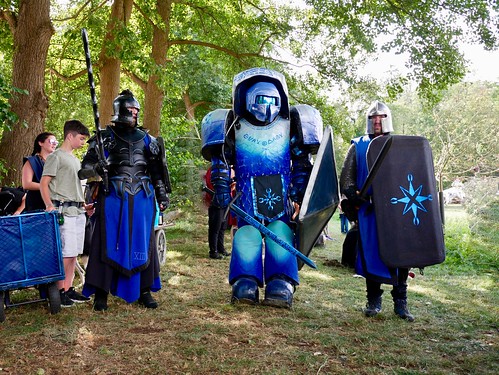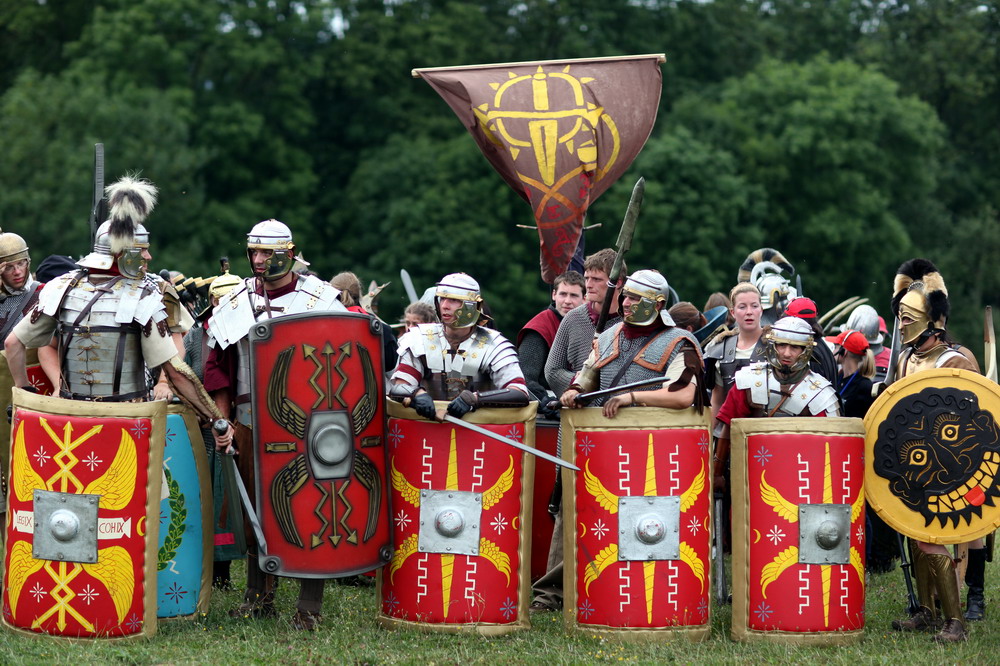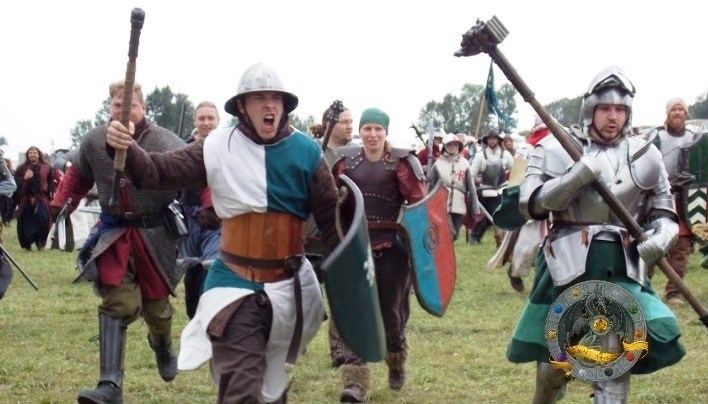A Beginner’s Guide To Live Action Role Playing


Live Action Role Playing or LARP is a combination of collaborative storytelling, art, game, and costuming. It is a form of role-playing game where participants portray their characters through dress, speech, and expression, and dramatize their interactions with others in a make-believe setting.

A BRIEF HISTORY OF LARP
LARP is essentially roleplay at its core. Experts and enthusiasts alike have said that it’s hard to pinpoint its beginnings since humans have been roleplaying since the beginning of civilization. Children have always played using their imagination and props such as toys and other instruments. This could be defined as childhood LARP. Their games often stem from historical or even pre-historical equivalents across the world. For example, children in the past may have played a group of hunters by mimicking their elders or re-enacted older occupations such as stone masonry or blacksmithing.
It wasn’t only children who enjoyed roleplaying in the past. Adults in ancient societies frequently participated in reenactments as well. Ancient Rome had exotic animal hunts and gladiator fights as forms of entertainment. In 46 B.C., Julius Caesar was credited for holding the first naval battle spectacle, or naumachia, in Roman history.
England’s Queen Elizabeth I (1558–1603) reportedly loved LARP-like entertainment and presided over elaborate events that were hosted by one of her favorite aristocrats, Robert Dudley, the 1st Earl of Leicester.
During China’s Han dynasty (206 BCE-220 CE), it was common to hold events with performers who acted out historical events including warrior stories from the past. It eventually helped shape the foundations of early Chinese opera, which used glove-and-stick and clay puppets as props.
LARP is an interactive experience and one of its roots can be traced to psychology. Jacob Levy Moreno is credited as the founder of psychodrama which is defined as “the science that explores truth by dramatic methods.” Moreno directed the Theatre of Spontaneity, one of the first improvisation theaters in the world in Vienna in the 1920s. He revived it again when he moved to New York in the 1930s. There is no audience in therapeutic play as it involves the self or two people. Apart from psychodrama, he also experimented with sociodrama and sociometric to explore group dynamics.
Besides simulation and experiential learning, LARP can also be used to describe improvised role-playing and theater games. Adding spontaneity while telling stories to act is a variant of improvisational theatre, or improv.
Keith Johnstone formulated a new approach to improv called Theatresports in the 1970s, which is a combination of theatre and sports. Johnstone’s Theatresports would have team sports participants vie for judges’ points and have audiences cheer or jeer accordingly.
Viola Spolin created another approach by combining improv with a method of teaching acting. Theatre Games is meant to help actors enjoy honing the craft of acting if it was done in a more enjoyable way. Spolin’s Theatre Games gave birth to modern improv. She and her son, Paul Sills, continued to teach and develop theories and practices in the 1960s.
In the 1960s, the founding of the Society for Creative Anachronism was credited for adding fantastical elements to LARP. Fantasy LARP grew in popularity and cemented itself as one of the most recognizable genres with the publication of early tabletop role-playing games like Dungeons & Dragons in the 1970s.
The 1980s saw the growth and expansion of LARP and its genres in many countries. There were established societies in Russia, Britain, South Africa, and most Nordic countries. In the 1990s, Mind’s Eye Theatre published its LARP system which was recognized all over the world.

COMPONENTS OF LARP
LARP can mean a lot of different things depending on the location where it takes place. However, there are common components for these games and these are:
1. Characters
a. Game Master (GM) – The person that is the organizer, arbitrator, moderator, and officiant of the rules in the game. There can be several GMs in bigger campaigns.
b. Player Character (PC) -They are active players in the game. The PCs must have names and backstories. They have the ability to learn and develop new skills over the course of the campaign or game session. Advanced players make use of accents, costumes, and weapons depending on the style, genre, and skill level.
c. Non-Player Characters (NPC) – NPCs are part of the game but they don’t take an active part in it. An example would be a merchant who provides items for PCs.
d. Marshals – They are in charge of people’s safety and help enforce the rules for players who go out of character (OOC).
2. Genre – In LARP, genre pertains to the types of style a make-believe world and its interactions should be set in. There are many types of genres including fantasy, historical, modern, horror, supernatural, and post-apocalyptic.
3. Style – The three main types of styles in LARP are demonstrative, salon, and live steel.
4. Resolution Systems – A guide that serves as a basis for how players solve certain situations or complete objectives. The most popular resolution systems are The Mechanics Axis and The Interaction Axis.
5. Physical Location & Time – The venue for the campaign and its duration.

LARP has no single point of origin and that is why there are various histories and styles of how it is played in different countries. While LARP has multiple variations, it should never be confused with other forms of dressing up. Massively multiplayer online role-playing game or MMORPG is a video game that is story-driven similar to LARP, only that it takes place in a virtual online world.

A. LIVE-ACTION ROLE-PLAYING VS COSPLAYING
Costuming is where cosplay and LARP find common ground. However, while both make use of eye-catching costumes, they also differ a lot in many aspects.
| LARP | Cosplay |
| Design own character | Imitate the design of a character from existing books, movies, anime, or games. |
| Roleplay and staying in-character required | Acting is optional/not required |
| The costume is functional and can be used for fights | The costume is for visual purposes only; can be extremely detailed |
| Characters revolve around a plot | Characters can exist alone |

B. SIMILARITIES & DIFFERENCES BETWEEN MMORPG AND LARP
MMORPG is much more accessible to a lot of people because anyone can play it online whereas LARP-ing in real life will take much more preparation than sitting in front of the computer.
| MMORPG | LARP |
| Roleplaying digitally | Roleplaying in real life |
| Digital social interaction | Actual social interaction |
| Game immersion online | Game immersion in the real world |
| Character creation achieved in a few clicks | Character creation is more extensive |

There really is no limit to the LARP ecosystem, which is why its genres have their own subgenres. Therefore, anyone looking to join the game will always find something that’s for them. Here are some of the most common genres in LARP.

1. High Fantasy
There is a wide scope of what is considered high fantasy but basically this setting deals with a lot of magic, from entities to beings. Races range from humans, elves, and orcs, to trolls, animal people, and beyond.

2. Science Fiction
This kind of setting can either be futuristic or dystopian and deals with advanced technologies. There can be intergalactic travel, teleportation, spaceships, robots, and more.

3. Historical
This is not to be confused with historical reenactment. Historical LARP is a reimagination of events that occurred in the past with characters that may not exist or are loosely-based on key figures.

4. Horror
Anything that deals with horror. This genre can be used for people who want to LARP vampires, zombies, and other monsters.

5. Low Fantasy
The existing races in this genre tend to come from human and myths and legends. There may be magic elements but it is not as prevalent in high fantasy LARP.

Rules exist for a reason in LARP. The point of the games is to achieve total immersion, which is why a system is enforced — to avoid spoiling the enjoyment of everyone else. Here are some basic do’s and don’ts when playing LARP.
| Do’s | Don’ts |
| Turn Electronics Off | Use Era-Inappropriate Clothing/Implements |
| Be in Character | Speak Out of Character |
| Have Weapons Inspected By a Weapons Marshal | Hit Too Hard to Cause Injury |
| Play with Others | Make Your Own In-Game Meta |
| Know the Rules | Cheat |
| Help With Cleanup | Harass Players Physically or Verbally |
| Bring Necessities (food, water, toiletries) | |
| Combat Training | |
| Respect Safety Calls |

There are many reasons why people love to LARP. Some use it as an opportunity to be someone else for a day. Others use it as a means to immerse themselves in a fantasy, and there are others who love the competitive nature of mock battles. Whether people LARP solo or in groups, everyone is bound to have an extraordinary experience.

If you’re interested in trying LARP, below are some quick tips to help you get started:
1. Research the LARP that interests you
Regardless of your specific preferences and interests, you will find that there will always be a LARP game for you. The sky’s the limit when it comes to imagination and that’s one of the greatest things about LARP.
2. Research event and contact organization
Once you’ve found the event you want to attend, gather as much information as you can and contact the organization for questions and clarifications.
3. Create a character
The fun part begins! Once you have the guidelines for character creation for a specific event, you can bring your character to life by giving them a name, story, and even a costume.
4. Be in character
You’ve gone to the trouble of creating your character, so it would be a waste to not fully immerse yourself in the experience. Do your best and stay in character and interact with other players too.
5. Prepare costume and packing list
If the LARP event is some considerable distance from where you currently live, it is best to prepare your things by making a packing list. Most seasoned players will tell you that it’s better to start weeks ahead of time to ensure that you bring everything you need.
6. Buy
Every newbie must start somewhere and it’s a reality that not everyone can sew clothes or make weapons on their own. Beginners can buy their weapons and gear to build their collection quickly and get started.
7. Make your own
If you have the means and resources to make your own costume and weapons, then go for it. This tip also applies to those who will attend future LARP events with friends who are seasoned players.
8. Attend the event
There’s no turning back now. With your ticket, costume, gear, and necessities, all you have to do is show up. Don’t forget to have fun!




